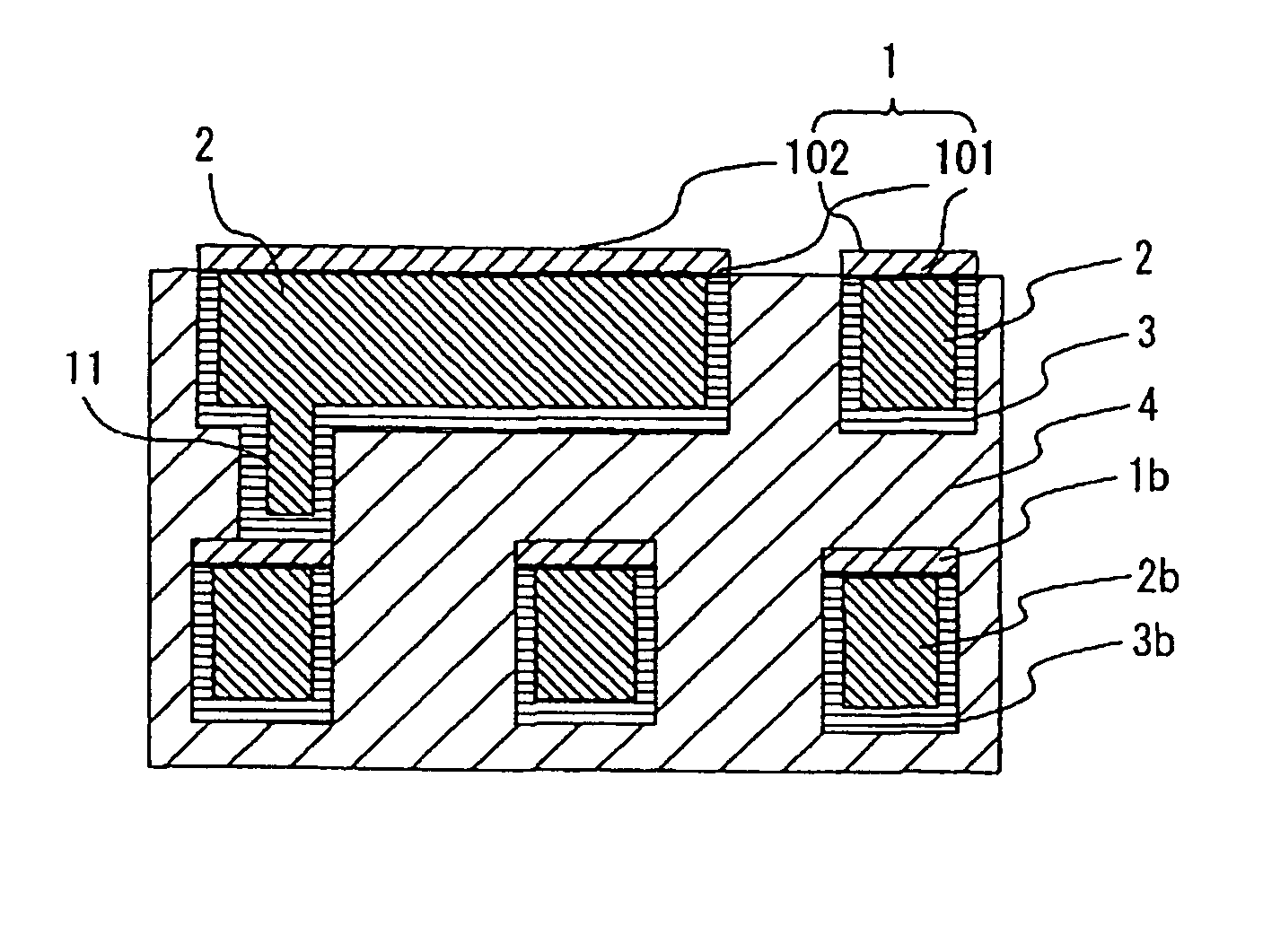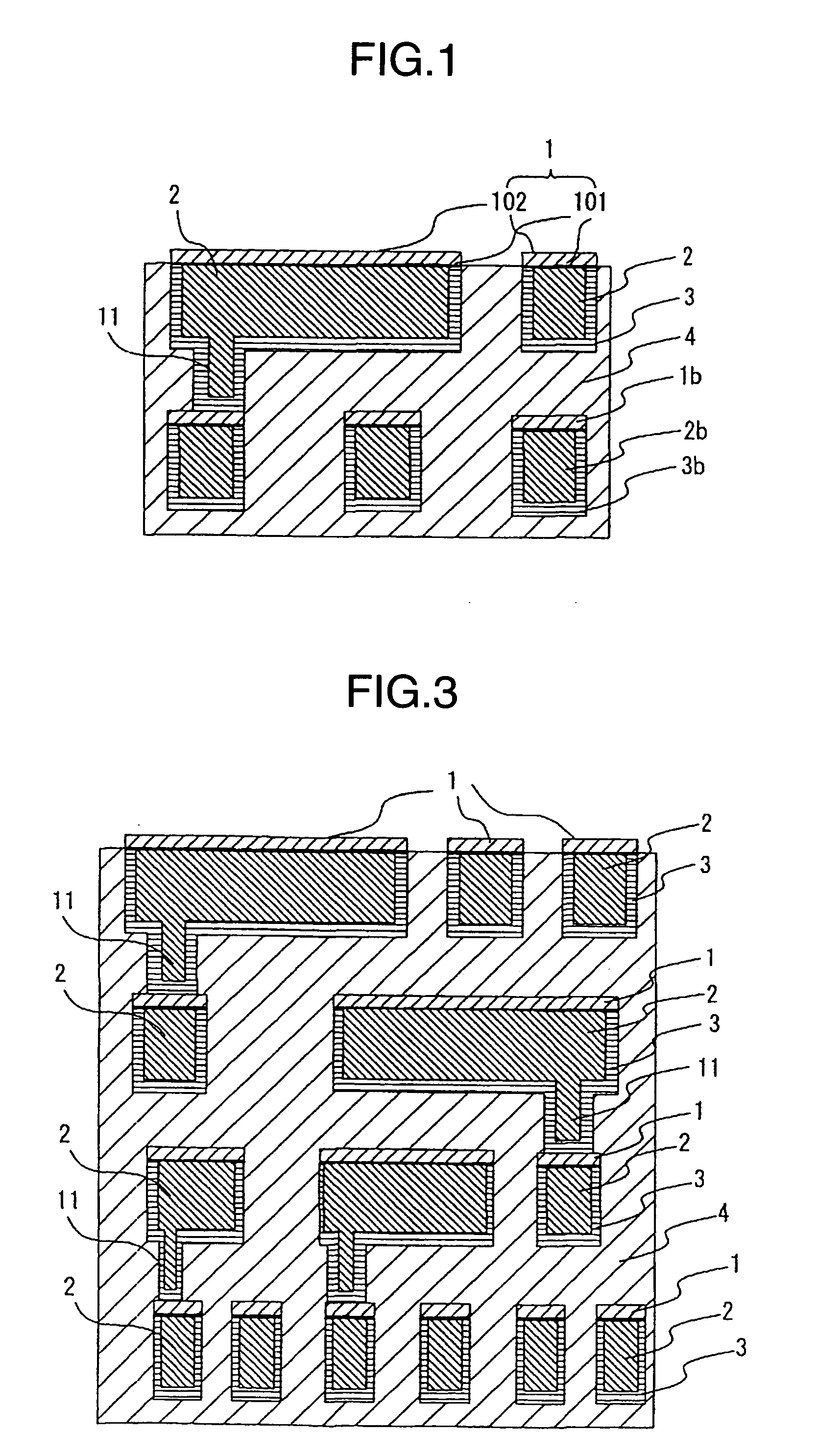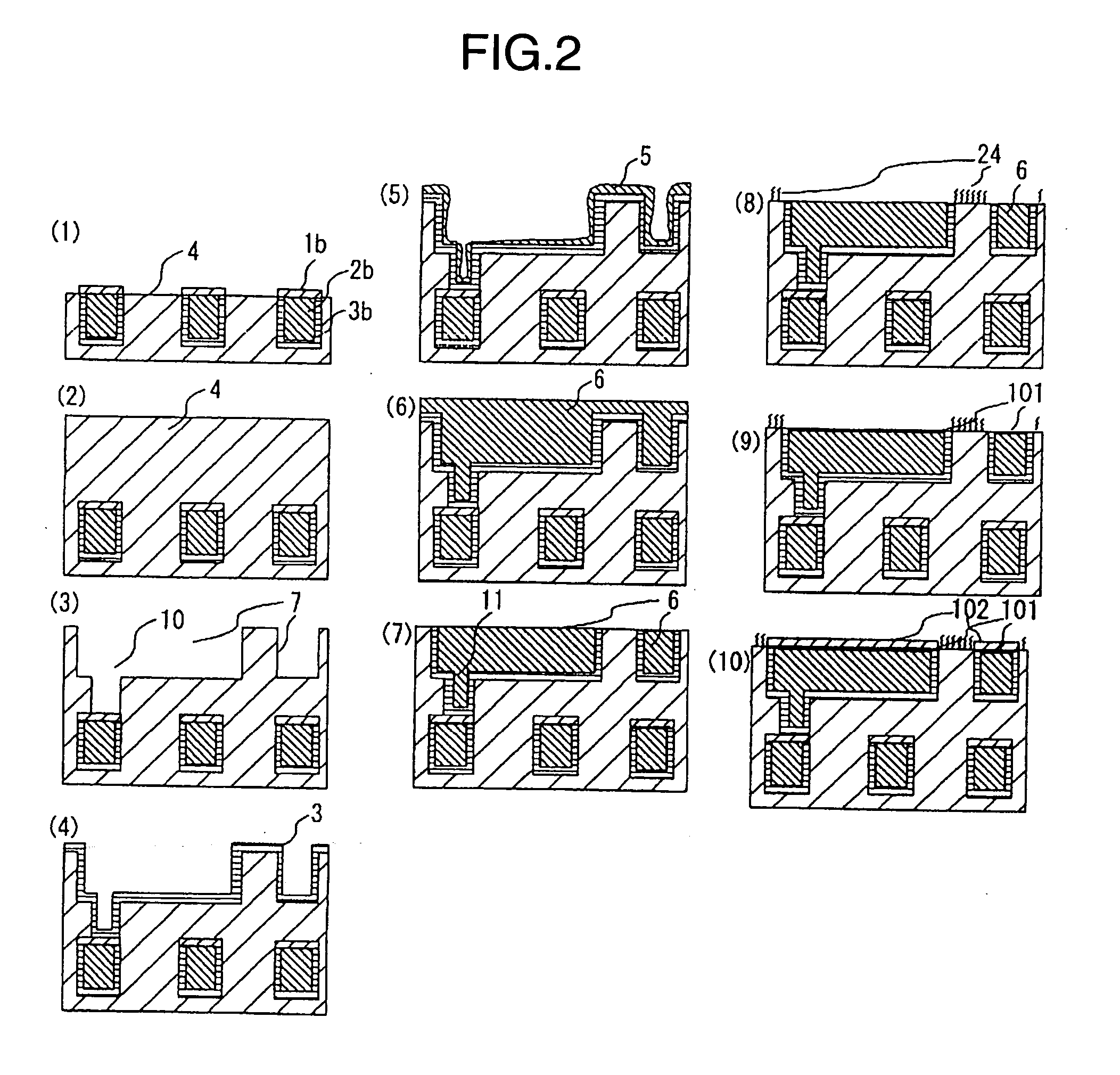Semiconductor production method
a production method and semiconductor technology, applied in the direction of semiconductor devices, semiconductor/solid-state device details, electrical apparatus, etc., can solve the problems of deteriorating insulation reliability between interconnects, and achieve the effect of preventing deterioration of copper interconnects and device reliability
- Summary
- Abstract
- Description
- Claims
- Application Information
AI Technical Summary
Benefits of technology
Problems solved by technology
Method used
Image
Examples
example 1
EXAMPLE 1 is described by referring to FIG. 2. A 200 mm-diameter silicon substrate was provided with the devices of the lower copper interconnect 2b (FIG. 2(1)), and then with the SiO2 dielectric film 4 to a thickness of 1 μm by a known CVD procedure (FIG. 2(2)). The dielectric film was porous with a number of 3 nm-diameter holes. Then, the wiring grooves 7 and connection holes 10 were provided by dry etching (FIG. 2(3)), where the wiring groove was 0.3 μm wide and connection hole was 0.3 μm in diameter. Then, TA was formed into a 50 nm thick film by sputtering to serve as the barrier film 3 (FIG. 2(4)), and copper was formed into a 150 nm thick film to serve as the copper seed layer 5 (FIG. 2(5)). The copper seed layer 5 was formed by a long-distance, Cu-sputtering apparatus (Nippon Shinku Gijutsu, Co., Ltd., CERAUSZX-1000) at a film-making speed of 200 to 400 nm / minute. The coated substrate was immersed in the plating solution, described below, and plated under the conditions of ...
examples 2 to 6
, and Comparative Examples 1 to 2
In EXAMPLES 2 to 6, the dielectric substrate described in Table 1 was coated with the layers, where the combination of the plating pretreatment steps was changed to evaluate the selective deposition. The semiconductor was prepared in each of EXAMPLES following the procedure similar to that for EXAMPLE 1. The dielectric film 4 prepared in each of EXAMPLES 4 to 6 and COMPARATIVE EXAMPLE 1 was not porous. Selectivity was evaluated by SEM analysis and elementary analysis based on energy dispersion X-ray (EDX) spectroscopy according to the following patterns. Evaluation of undeposited part 100 holes, 0.12 μm in diameter, in a dot-shape pattern
Abnormal Deposition on the Dielectric Film between the Interconnects 100 lines in a line-and-space pattern, 0.15 μm wide, where the dielectric film surface between the 2 lines was observed
Abnormal Deposition in the Porous Dielectric Film 100 lines in a line-and-space pattern, 0.15 μm wide, where the dielectri...
example 7
In EXAMPLE 7, the capping (metal) layer 1 was prepared in a manner similar to that for EXAMPLE 1, and evaluated by a life test. The semiconductor prepared in EXAMPLE 7 was provided with a 4-layered capping (metal) layer, as illustrated in FIG. 3, prepared by repeating cycles of the steps (1) to (10) shown in FIG. 2. The life test measured reliability of the dielectric film and interconnect resistance increase after 600 and 1200 hours of service. Interconnect shape (A) Line width: 0.13 μm (B) Film thickness: 0.8 μm (C) Interconnect length: 2.5 mm
Test Conditions (A) Temperature: 175° C. (B) Current density: 3×106 A / cm2
Interconnect resistance increased by 2% after 600 hours and 5% after 1200 hours. No dielectric breakdown was observed after 1200 hours.
It was thus demonstrated that the semiconductor of this embodiment was stable over a long period of time. The reliability test with a voltage applied to the semiconductor also has confirmed the effect of the present invention ...
PUM
| Property | Measurement | Unit |
|---|---|---|
| dielectric constant | aaaaa | aaaaa |
| thickness | aaaaa | aaaaa |
| diameter | aaaaa | aaaaa |
Abstract
Description
Claims
Application Information
 Login to View More
Login to View More - R&D
- Intellectual Property
- Life Sciences
- Materials
- Tech Scout
- Unparalleled Data Quality
- Higher Quality Content
- 60% Fewer Hallucinations
Browse by: Latest US Patents, China's latest patents, Technical Efficacy Thesaurus, Application Domain, Technology Topic, Popular Technical Reports.
© 2025 PatSnap. All rights reserved.Legal|Privacy policy|Modern Slavery Act Transparency Statement|Sitemap|About US| Contact US: help@patsnap.com



